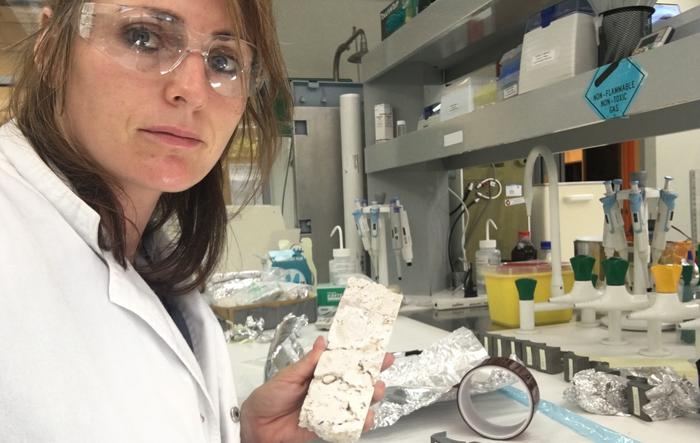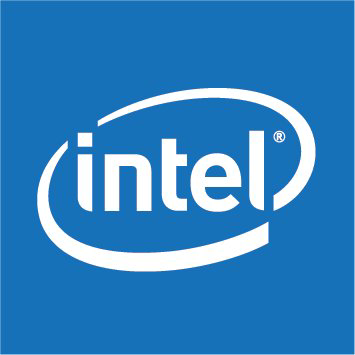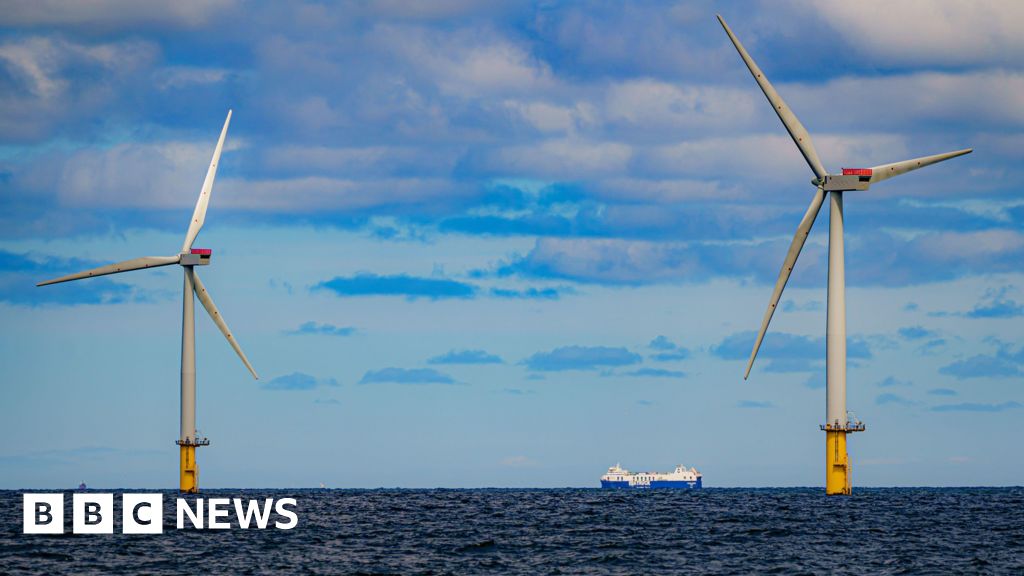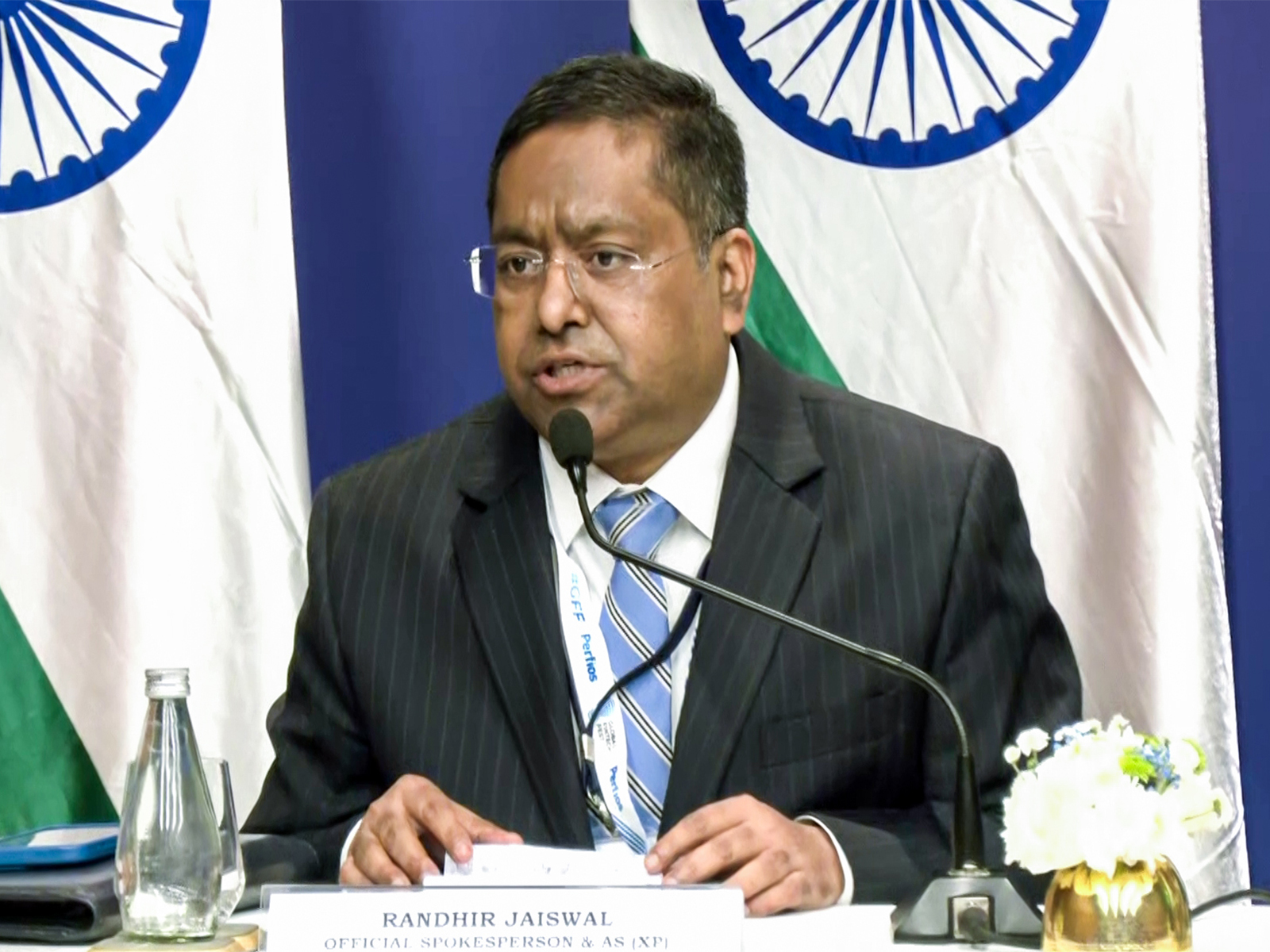- Blast at Tennessee munitions plant leaves 19 missing, possibly dead Reuters
- Live updates: Some dead after massive blast at Tennessee military explosives facility BBC
- Deadly Oct. 10 explosion marks second in nearly 12 years at TN explosives…
Blog
-
Blast at Tennessee munitions plant leaves 19 missing, possibly dead – Reuters
-
Access Denied
Access Denied
You don’t have permission to access “http://www.spglobal.com/market-intelligence/en/news-insights/articles/2025/10/dc-capital-acquires-agi-harkness-snaps-up-premier-fence-93737367” on this server.
Reference #18.daa0d517.1760170032.231d58b6
https://errors.edgesuite.net/18.daa0d517.1760170032.231d58b6
Continue Reading
-

Neutron Scans Unlock Coral Climate Secrets
What can fossils teach scientists about the climate on ancient Earth? This is what a recent study published in Geochemistry, Geophysics, Geosystems hopes to address as a team of scientists investigated how…
Continue Reading
-

Samsung Expands Home Appliance Remote Management (HRM) Service Globally to Enhance Customer Experience – Samsung Newsroom Canada
Now available in 122 countries and 17 languages, HRM delivers faster, more seamless customer support across borders
Samsung Electronics Co., Ltd is expanding it Home Appliances Remote Management (HRM) service globally, enhancing the remote diagnostic and troubleshooting experience for smart appliances users around the world. The service is now active across 122 countries including Canada with support for 17 languages, enabling seamless support for a wide global customer base.
HRM is a service that connects SmartThings-connected appliances to Samsung’s service network, maintaining a continuous record of device conditions and enabling real-time monitoring through the service center.
“Samsung’s HRM service exemplifies our commitment to proactive, smart customer care,” said Miyoung Yoo, EVP and Head of Global Customer Satisfaction Team, Digital Appliance (DA) Business at Samsung Electronics. “Thanks to the combination of seamless connectivity and real-time insights, this service helps to reduce complexity for our customers, ultimately enhancing their overall satisfaction.”
Enhancing Service for Screen Appliances
In line with the expansion of screen-equipped appliances like Bespoke refrigerators and washing machines, Samsung has also introduced a screen-sharing feature to enhance diagnostic capabilities. For various screens of 7”, 9”, and Family Hubs, its users can share their device screens in real time with service centre advisors, allowing diagnosis of display-related issues, app malfunctions or multimedia playback problems.
Immediate Solutions and Reduced Service Visits through Remote Assistance
Samsung’s HRM service improves a new avenue for customer care by enabling real-time remote solutions for simple product issues that previously required in-home technician visits. For instance, for a customer that reported that the washing machine’s buttons were not responding, the advisor was able to diagnose through the HRM system that the Child Lock setting was active. With simple guidance on how to disable the setting, the problem was solved instantly without a technician’s visit. In another case where a customer reported condensation on the refrigerator door, with user consent, the advisor was able to remotely turn on the internal heater, which effectively eliminated the moisture.
In cases when an on-site visit is ultimately necessary, HRM improves the experience by allowing technicians to review detailed diagnostic data in advance. They are able to arrive at the site prepared, potentially reducing repeat visits and repair times.
Growing Adoption and User Satisfaction
With the continued expansion of customer support solutions like HRM, Samsung is realizing convenient and efficient ways to care for home appliances – reducing downtime, enhancing the user experience and setting new standards for global service. As HRM reaches more countries, languages and product categories, Samsung remains committed to delivering smarter, more connected care for the homes of the future.
HRM is supported on SmartThings-enabled models released after 2019. Must download the SmartThings app available on Android and iOS devices. A Wi-Fi connection and a Samsung account are required.
In Korea, HRM supports refrigerators, washing machines, dryers, air conditioners, vacuum cleaners, and dishwashers. In Canada, HRM supports refrigerators and washing machines.
Continue Reading
-

Trump, Nvidia, and Apple Just Flipped the Script
This article first appeared on GuruFocus.
Intel’s (NASDAQ:INTC) comeback could be one of the most surprising corporate turnarounds this year. After President Donald Trump publicly called for CEO Lip-Bu Tan’s resignation earlier this summer, few expected the story to flip this fast. But it did. Since the White House signaled plans to take a 10% stake in Intel, the company’s shares have climbed more than 50%, marking one of its strongest rallies in years. The political backing ignited a string of high-profile investmentsSoftBank committed $2 billion, followed by Nvidia’s (NASDAQ:NVDA) $5 billion partnership deal to co-develop chips for PCs and data centers. Reports also suggest Apple has explored a potential collaboration, though talks remain preliminary.
Beyond the headlines, Intel is quietly rebuilding the core of its business. The company confirmed that its next-generation Panther Lake chips, built on its 18A manufacturing process, are now in full production and slated for laptops early next year. This technology marks Intel’s long-awaited return to producing its most advanced chips in-house after years of outsourcing to TSMC. Intel’s management views the 18A process as a critical testone that could finally position its foundry unit to win new contracts from major designers like Nvidia and Apple (NASDAQ:AAPL), provided the performance holds up under industry scrutiny.
The next phase, however, may hinge on execution rather than momentum. Nvidia said it will monitor Intel’s progress before committing further, while Apple’s potential involvement could start with simpler products such as Apple TV chips. Still, Intel’s strengthened relationship with Washington could prove strategically valuable, offering companies a politically favored path to build in America without constructing their own facilities. Investors seem to sense that Intel’s reset is gaining tractionbut transforming optimism into long-term customer demand will be the real test of whether Lip-Bu Tan’s turnaround plan can endure.
Continue Reading
-

Levi Strauss Shares Fall as Tariff Costs Cloud Profit Outlook
This article first appeared on GuruFocus.
Levi Strauss & Co. (LEVI, Financials) shares fell almost 7% in premarket trade on Friday.The denim maker said that new tariffs would affect fourth-quarter margins, even as it raised its full-year profit outlook.
The San Francisco-based garment manufacturer said that higher import costs from places like Bangladesh, Cambodia, and Pakistan, which have high tariffs under current U.S. trade policies, will cut gross margins by 130 basis points.
The estimate shows how changing U.S. trade regulations could affect global supply chains, especially for retailers who do a lot of business in places that don’t have free trade. Levi’s said it got around 70% of their holiday stock early and hiked some prices to make up for the tariff hit.
Investors were more worried about the impact on margins, even while sales were going up and younger buyers were still buying baggy and loose-fitting clothes. Barclays analysts called the outlook cautious, while Morgan Stanley said the guidance meant that the holiday quarter will be weaker since it would be harder to compare to the same quarter last year.
Levi’s stock has gone up approximately 40% this year because they have better control over their inventories and more full-price sales. Its forward price-to-earnings ratio is about 17, which is lower than Ralph Lauren’s 20.6 and higher than American Eagle Outfitters’ 11.4.
The company’s next big test will be how it deals with tariffs throughout the holiday season while keeping prices high and demand strong.
Continue Reading
-

Chinese firm planning £1.5bn turbine plant in Scotland
 PA Media
PA MediaMing Yang says it wants to invest up to £1.5bn in building the facility in the Highlands A Chinese energy company has announced plans to build the UK’s largest wind turbine manufacturing facility in Scotland.
Ming Yang said the £1.5bn project would create up to 1,500 jobs, with the first production taking place by late 2028.
The firm, which is the largest private wind turbine manufacturer in China, has shortlisted the green freeport site at Ardersier as its preferred location for the facility.
Ming Yang said it would invest up to £750m in the first phase of its investment before expanding to create an “offshore wind industry ecosystem” around the hub.
It has been in talks with the Scottish and UK governments over the past two years.
The firm’s UK chief executive, Aman Wang said: “We firmly believe that by moving forward with our plans to create jobs, skills and a supply chain in the UK, we can make this country the global hub for offshore wind technology.
“We fully support the government’s mission to become a clean energy superpower, and I’m confident that once the plans are approved we can make a valued contribution to this goal.”
But a Conservative MP has previously questioned the wisdom of letting the company invest in the UK.
Last November, MP Nick Timothy asked UK energy minister Michael Shanks about Ming Yang’s plans to invest in Scotland, saying the government should rule out investment from “hostile states”.
Timothy said Ming Yang “benefits from huge subsidies in China,” adding any investment was subject to “serious questions about energy and national security”.
The UK government’s Energy Secretary, Michael Shanks, said he would “encourage investment”.
In a statement released on Friday, a UK government spokesperson said: “This is one of a number of companies that wants to invest in the UK.
“Any decisions made will be consistent with our national security.”
Continue Reading
-

Navigating Metastatic CRC Treatment Options in Later Lines | Targeted Oncology
In the later-line treatment of metastatic colorectal cancer (CRC), options become more limited and are often guided by prior therapies and biomarker status. Michael J. Overman, MD, associative vice president of research, Cancer Network, Division of Cancer Medicine and professor at The University of Texas MD Anderson Cancer Center, moderated the discussion at a live Case-Based Roundtable event in Dallas, Texas. Overman detailed the use of liquid and tumor biopsies for rapid molecular profiling to inform frontline decisions. He also reviewed key third-line regimens, and the consideration of anti-EGFR rechallenge in selected patients.
Register today to join a Case-Based Roundtable near you. CASE SUMMARY
- A 58-year-old female teacher was diagnosed with metastatic CRC 3 years ago. The primary tumor was in the sigmoid colon with metastatic lesions in the liver and peritoneal implants.
- Tumor genomics: microsatellite stable (MSS), RAS wild type, BRAF wild type, HER2 negative, low tumor mutational burden
- Medical history: controlled hypertension, type 2 diabetes, and history of deep vein thrombosis 5 years ago
Treatment
- Received folinic acid/fluorouracil/oxaliplatin/bevacizumab in first line with initial partial response; progression after 11 months of therapy; during treatment patient experienced grade 2 peripheral neuropathy, which stabilized with oxaliplatin dose reduction
- Received folinic acid/fluorouracil/irinotecan/cetuximab in second line with initial disease control; progression after 8 months of therapy; patient experienced grade 1 skin rash that was managed with topical treatments
- Currently, patient reports grade 1 fatigue that worsens toward the end of each treatment cycle and grade 1 myelosuppression. Last imaging showed mixed response with no new lesions.
- ECOG performance status: 1 (intermittently grade 2 for several days after each chemotherapy cycle)
Laboratory results
- White blood cell count: 3.2 x 109/L
- Hemoglobin: 10.2 g/dL
- Platelets: 95 x 109/L
- Alanine aminotransferase: 65 U/L
- Aspartate aminotransferase: 58 U/L
Targeted Oncology: What testing do you normally get for patients with CRC such as this?
Michael J. Overman, MD: At MD Anderson Cancer Center, we do a lot of testing, but we do liquid biopsy to get at that issue so that we get a molecular test back quickly. We also do the tumor because it’s bigger, so we do both. That’s not [the most] health economic but that’s our approach to getting it because of the issue of, by the time you get your NGS, you already started therapy…. I don’t know if a lot of people do that, if you have the same issue in the front line for liquid biopsy these days. I think it’s even more relevant now because of the BRAF mutations. Now BRAF [inhibition] is frontline therapy.
How does circulating tumor DNA (ctDNA) factor in in these kinds of cases where there’s mixed response?
For colon cancer, we have carcinoembryonic antigen [CEA], which is a pretty good surrogate. I think ctDNA would probably be a more accurate surrogate, if you had it, but you’d have to be tracking it over time. We do a ton of minimal residual disease testing.
The best data, I think, on treatment, is immunotherapy [IO]-based data. There are some really good IO data with ctDNA, I think a good early predictor of IO benefit and addresses that pseudo-progression issue that sometimes can come up. The data are really good there. I think on systemic therapy, it’s a good readout. It’s just a more accurate CEA, to some degree. Right now, how much is it an aid to what you already have? I don’t know if we do it in the metastatic setting for following; we do it for profiling up front. That’s where we try to get our HER2 amplification, BRAF, or NRAS testing, and be able to make a frontline decision by doing liquid biopsy. But it does get you to where you end up doing both. If we have time to wait, then just do tumor biopsy and wait. That’s fine, but often they don’t want to wait 3 to 4 weeks.
What are the second-line therapy options for this patient with metastatic CRC?
In the NCCN, we have the biomarker-directed therapies for HER2, KRAS G12C, BRAF, and more in the frontline. For previous therapy [with oxaliplatin and irinotecan], we have fruquintinib [Fruzaqla], regorafenib [Stivarga], trifluridine/tipiracil [Lonsurf], and trifluridine/tipiracil/bevacizumab. That would be the third-line options.
The treatment here that I don’t think they list that we sometimes do is the anti-EGFR re-challenge. In this case, the patient had second-line EGFR treatment, but if they had frontline EGFR, [it might be an option]. There are small data sets for EGFR rechallenge. They’re smaller randomized studies, but there are some; the data are definitely much more solid for treatments such as trifluridine/tipiracil/bevacizumab or fruquintinib. I can talk about regorafenib, but regorafenib has some issues.
We would say our approach would be time off from prior EGFR treatment, and then we often do a liquid biopsy to make sure they don’t have any persistent MAP kinase alterations. The data are clear that if a patient has a persistent RAS or MAP kinase alteration, they don’t get benefit. So that would be our approach, and response rates have been pretty consistent, [up to] 20% for EGFR rechallenge in that setting.1 It’s something we do consider in a certain setting. But I would probably put it later [rather] than earlier. The one thing where we do use it is that EGFR rechallenge does give them a response, whereas some of these agents are…more cytostatic, so you get more survival benefit, but not response benefit. So if you really need a response, then that sometimes is something we consider for that sole reason.
How often are you seeing KRAS G12C and NTRK mutations in these patients?
It’s rare; it’s [around 3%].2 It’s a rare kind of KRAS variant in colon cancer. The NTRK and the other fusions are really rare. The fusions tend to be more common in patients with microsatellite instability [MSI].3 So MSI patients tend to have a much higher fusion rate than MSS. In standard colon cancer, it’s less than 1% but it’d be a little more common in MSI. I have seen them. NTRK [inhibitors] do work, but it’s super rare.
Register today to join a Case-Based Roundtable near you. DISCLOSURES: Overman previously reported consulting for 3T Biosciences, Agenus, Array, Bayer, Gritstone, Janssen, Merck, Merus, Pfizer, Summit Therapeutics, and Takeda, and grants/research support from Bristol Myers Squibb, Lilly, Medimmune, Merck, Nouscom, Phanes, Roche, and Takeda.
References:
1. Sartore-Bianchi A, Pietrantonio F, Lonardi S, et al. Circulating tumor DNA to guide rechallenge with panitumumab in metastatic colorectal cancer: the phase 2 CHRONOS trial. Nat Med. 2022;28(8):1612-1618. doi:10.1038/s41591-022-01886-0
2. Strickler JH, Yoshino T, Stevinson K, et al. Prevalence of KRAS G12C mutation and co-mutations and associated clinical outcomes in patients with colorectal cancer: A systematic literature review. Oncologist. 2023;28(11):e981-e994. doi:10.1093/oncolo/oyad138
3. Wang H, Li ZW, Ou Q, et al. NTRK fusion positive colorectal cancer is a unique subset of CRC with high TMB and microsatellite instability. Cancer Med. 2022;11(13):2541-2549. doi:10.1002/cam4.4561
Continue Reading
-

Amanda Nasrallah: Breast Cancer in Palestine – Barriers, Challenges, and the Way Forward
“The most prevalent cancer among Palestinian women is breast cancer, which poses a serious threat to public health [1]. Current epidemiology, risk factors, diagnosis, and treatment challenges, and ongoing initiatives are…
Continue Reading
